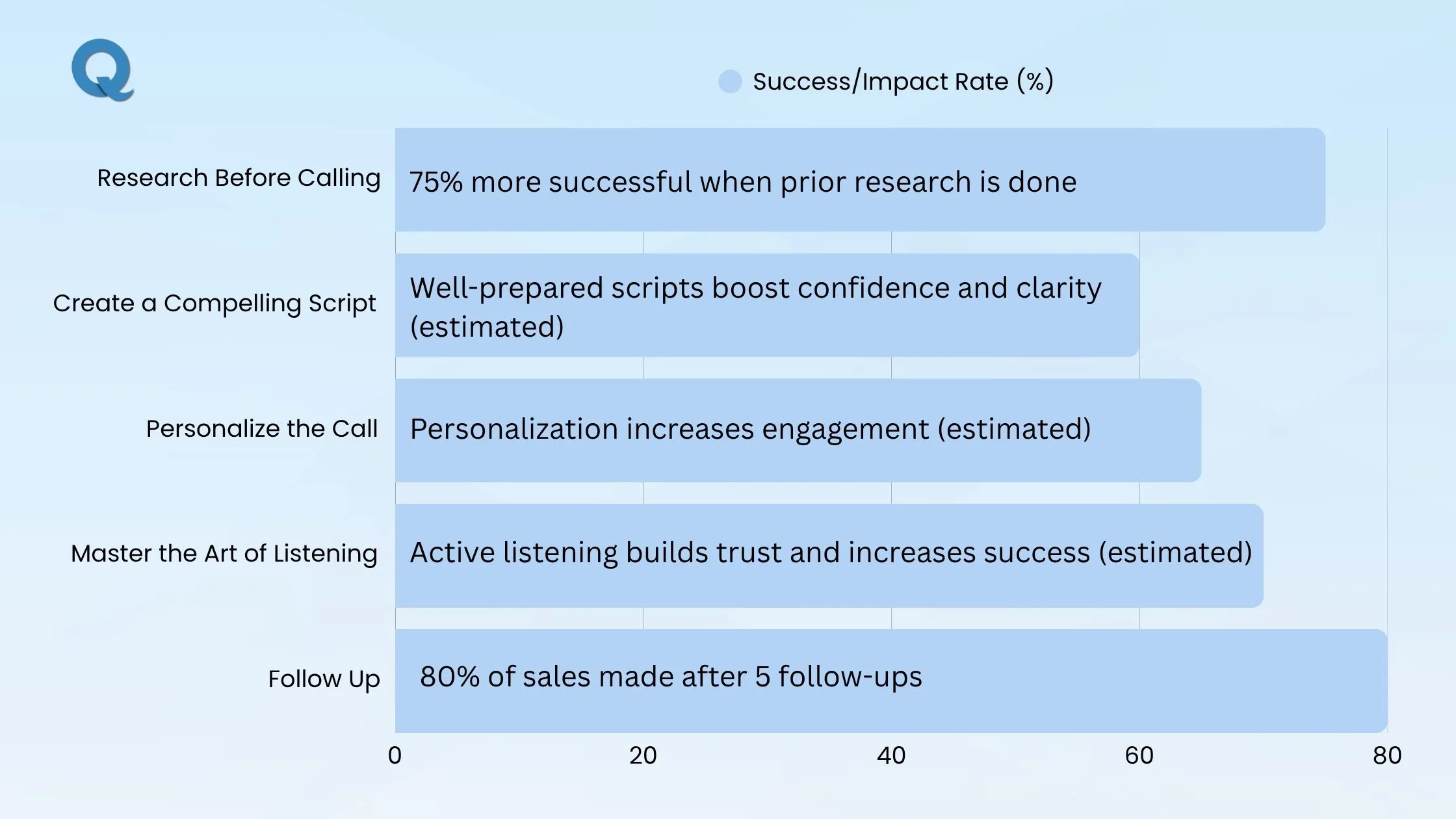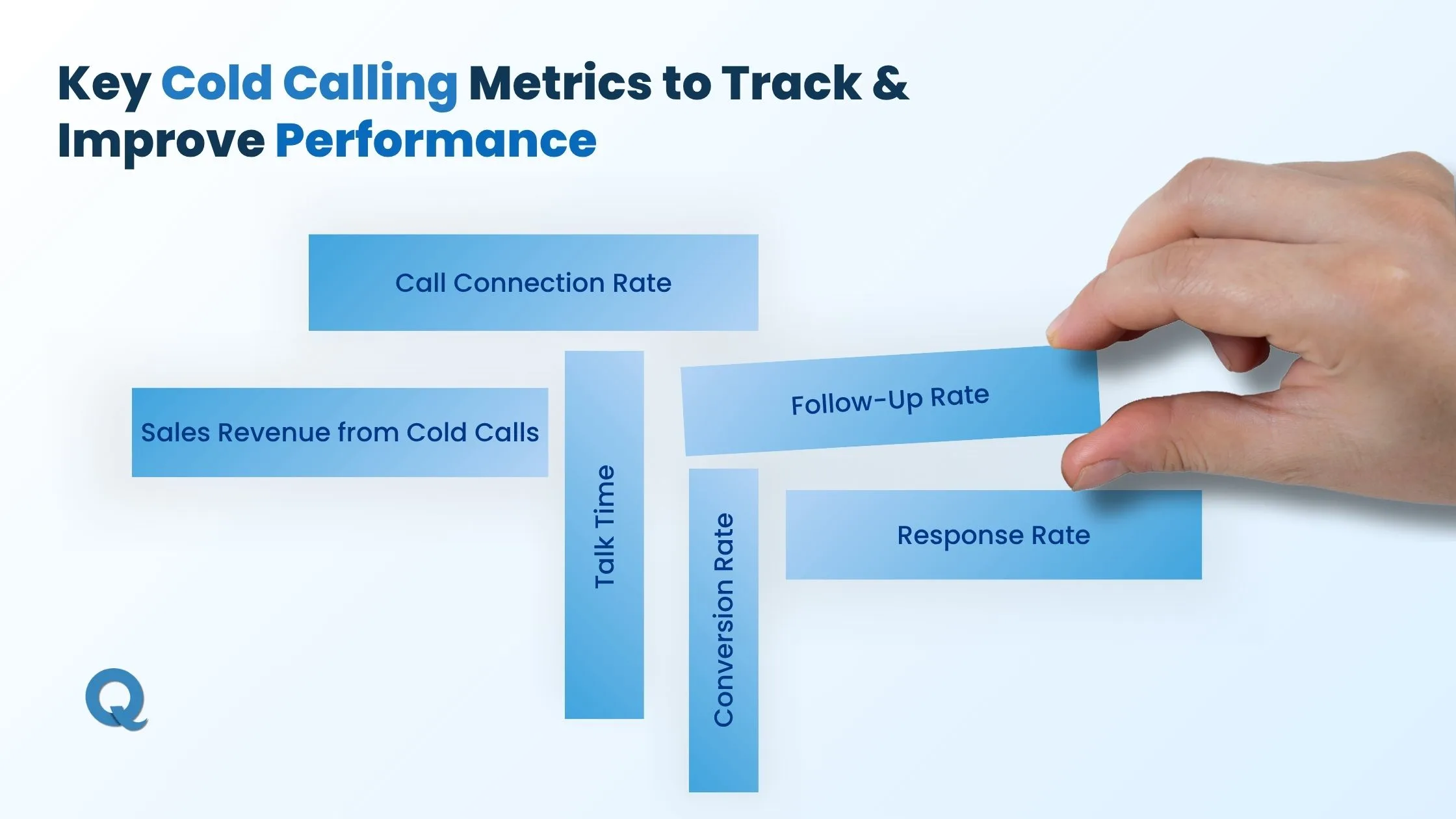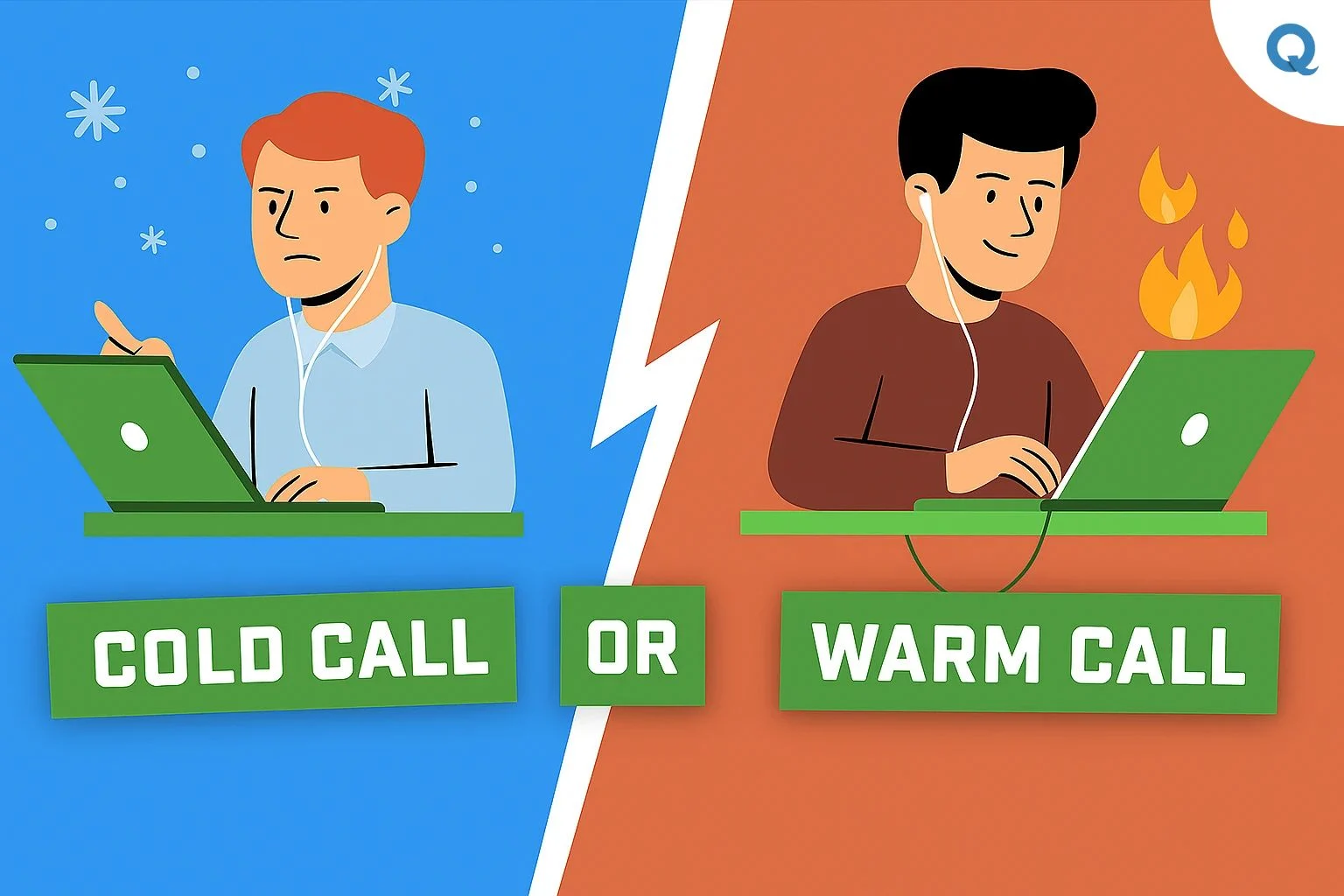What is Cold Calling in Sales and How It Can Grow Your Business?
Discover how cold calling can grow your business, improve your sales strategy, and increase conversions with effective techniques and best practices.
Author: Sujith Grandhi
Discover how cold calling can grow your business, improve your sales strategy, and increase conversions with effective techniques and best practices.
Author: Sujith Grandhi

Cold calling is a time-tested sales strategy that continues to deliver results. In fact, 69% of buyers are still open to receiving cold calls from new vendors in the past years.
However, the effectiveness of cold calling depends on more than just initiating contact. Understanding what is important for effective speech during a cold call, such as clarity, confidence, and personalization can significantly enhance your success rate.
In this blog, we’ll discuss how cold calling can help your business grow and share essential strategies to improve your success rate. Whether you’re just starting out or looking to refine your approach, mastering cold calling is key to connecting with potential customers and expanding your business.
Cold calling means talking to people who haven’t shown you they are interested in your service or product. It starts by connecting with people who are still unaware of your business. Treat it as a first step to meeting in person, but you accomplish it by calling first.
Cold calls may seem intimidating, but they still play a key role in getting more leads. Recognize the role of chance, because rejection happens, yet making frequent attempts increases your odds of reaching the right person. Effective selling with cold calls means taking the initiative, either promoting something new or simply starting a conversation.
Cold calling usually is the opening step in the sales process. Most deals won’t be made on the first conversation, but you still have a chance to interact, respond to inquiries and establish a connection that could become a sale in the future.
Cold calling plays a key role in any effective sales strategy. It is a simple method of attracting potential customers and showing them your product or service. Think about it as the starting point for building a relationship. Since these people may not know your business yet, it’s important to approach them in an effective way and turn them into returning buyers.
The average success rate of cold calling in 2025 is just 2.3% , nearly half of the 4.82% success rate seen in 2024. Apart from just talking, cold calling also helps you figure out which leads to follow up with. While some calls won’t end with a sale, they still give you useful knowledge to concentrate on the most promising leads.
In short, making cold calls is very important for gaining new customers, increasing your potential market and developing your sales plan.
Cold calling can be tiring, especially when you’re running a business. Qoli helps make it easier. It keeps your calls lined up, reminds you who to follow up with, and saves all the important things so you don’t have to remember everything.
It records your calls, adds notes, and shows you what’s working. So if someone shows interest, you won’t forget to call them back. And if a call doesn’t go well, you can figure out why and do better next time.
Qoli also connects with your calendar and other tools (Hubspot integration). That way, you’re not double-booked or wasting time. Everything stays in order.
If you or your team makes a lot of calls, Qoli just keeps things simple. No stress, no confusion, just clear calls and better follow-ups.

Strong results from cold calling can be accomplished by following some key best practices.

Always spend some time learning about your prospect before starting a cold call. Find out about the industry, what issues they have and how your product might offer assistance. When you speak to their needs, it makes it more likely that you will have a successful chat.
Though it’s important not to sound like a machine, you should use a script to avoid losing focus and missing the important points. When your cold calling script is well-prepared, you will be able to make your offer clearly and confidently. This matters a lot when you are only starting your career in cold calling.
Expressing your pitch in a way that speaks to each person is very effective. Take a moment to mention what problem prospects need to solve or what challenge they have, before presenting your solution. Knowing their business will help you build confidence and allow for more meaningful communication.
When you cold call, you should focus equally on speaking and listening to the other person. Paying close attention helps you know what your prospect struggles with. If you answer based on what they are saying, it increases the chance of having a successful conversation.
Not all sales happen in the first call. Actually, almost 80% of sales are made after 5 follow-ups have been attempted! Don’t give up even if the outcome of your first call isn’t a sale. You might want to contact your leads with a specific email or set up another call to develop the earlier conversation.
Reaching out to potential customers by calling feels like one of the best methods to quickly boost your business and attract fresh leads. Here’s the way it operates:
Cold calling introduces your business to new people who might not be familiar with it. Approaching people first allows you to find new groups of customers. 57% of sales in B2B businesses are made through cold calling, according to cognism’s research.
The main benefit of cold calling is that it can begin conversations with potential customers. It’s okay if the prospect doesn’t buy right away, since you are laying groundwork for more sales in the future. Creating trust and a good relationship is important in sales and cold calling helps achieve that.
Unlike a few other marketing approaches, cold calling lets you instantly communicate with customers. If done well, direct marketing helps you get people to act fast. Whether the goal is quick sales or maintaining leads, an instant response can come from making cold calls.
Cold calling helps you qualify leads quickly. Rather than waiting for someone to contact you, you can judge immediately if the person might be interested in your company’s product or service. It makes you invest your energy where there is the most chance of success.
Cold calling helps you regularly bring in new leads and keep your opportunities coming. When you make more calls, you raise the probability that your business will interact with interested prospects and grow smoothly.
It is important to track the right metrics when you want to assess and boost your cold calling results. These are the main factors to watch over:

It covers the number of completed calls you have with a potential customer. In 2025, around 65.6% of cold calls manage to initiate a conversation (Cognism's Research).
This indicates the number of times a cold call conversion happens, for example by securing a meeting or making the sale. More than 97% percent of cold calls made in 2025 go unsuccessful, compared to 95% in 2024 (According to Market.us Research).
How long a cold call lasts can show you how engaged the person is. In 2025, a cold call tends to last about 93 seconds which is slightly more than in previous periods (Cognism’s 2025 State of Cold Calling Report).
It demonstrates the frequency of your conversations where something important happened. According to studies, about 82% of buyers attend a meeting after receiving a cold call which shows that being persistent and reaching out the right way is key (According to RAIN Group's 2023 Top Performance in Sales Prospecting Report).
Persistence is key in cold calling. It often takes multiple attempts to reach a prospect, with 93% of successful leads being contacted on the sixth attempt (sourced from Velocify).
The way cold calling is evaluated is through its impact on sales and earnings. Cold calling plays an important role in building sales pipelines and many companies say it significantly contributes to their earnings.
Regularly checking these metrics helps you address weaknesses, revise your strategies and improve the results of your cold calling.
Making cold calls is a popular sales technique, but it comes with its own problems. You could meet these difficulties which you can handle using these tips:

Being rejected is bound to happen when you cold call. It may be hard, but try to remember that it isn’t aimed at you. Every rejection helps you get closer to success.
Solution: Overcome this by being determined and not letting it affect you too much. Remember that your mission is to create relationships and discover prospects that are suitable for your company.
Tip: Take a short break after tough calls, and come back ready to engage with new energy.
Many cold callers struggle to get past gatekeepers like receptionists or assistants. These individuals are trained to protect decision makers’ time.
Solution: To overcome this, be polite but assertive. Focus on the value you offer and ask if you can leave a brief message for the decision-maker.
Tip: Build rapport with gatekeepers. They can become allies in helping you get through to the right person.
If your connection rate is low, it suggests that you aren’t reaching the prospects enough. It may be disappointing, but this frustration is common for anyone in cold calling.
Solution: Make sure the people you call are the right prospects and discover which times of the day it’s best to place them.
Tip: Keep a call schedule and experiment with timing to find when your prospects are most likely to pick up.
Bad timing may cause you to miss important opportunities. Sometimes you cannot engage a prospect right away which can leave you feeling like your phone campaign is not effective.
Solution: Learning about your leads and the times they are available can help you improve.
Tip: Be prepared to adjust your approach based on the time of day and your prospect’s potential needs.
Relying too heavily on a script can make your cold calls sound robotic and impersonal, causing prospects to disengage quickly. If you sound like you're reading from a script, they may feel like just another number on your list.
Solution: The key to overcoming this challenge is to use your script as a guideline rather than a strict rule. Keep it flexible and conversational. Adapt your tone and language to match the prospect's personality and needs.
Tip: Practice sounding natural and conversational by focusing on the flow of the conversation instead of memorizing every word. Keep the script handy for key points, but let the dialogue evolve organically.
Many people reject cold calls because they aren’t greeted properly at the beginning. If the opening isn’t interesting enough, your prospects could choose to end the call rather than receive your information.
Solution: You can overcome this by starting your message with a hook that talks about the specific topic your audience cares about.
Tip: Always have a clear value proposition ready to grab their attention within the first few seconds of the call.
Lack of knowledge about your prospect may make the conversation go off track or feel uncomfortable. If you want to prevent this, check the company’s details online before calling.
Solution: Gather insight about the company by using a CRM or similar software.
Tip: Prepare a personalized script that references the prospect’s industry or specific needs, so the call feels more relevant to them.
Both cold calling and warm calling have important features when conducting sales outreach. Being aware of the differences allows you to pick the method that matches your business and goals.

Cold calling reaches out to people or companies that do not have any previous relationship with your company. You are contacting people who may not already know about your brand or product. As a result, cold calling can be very helpful for gaining more customers and entering new business areas.
When you use warm calling, the person you call is already aware of your business. Such leads may have previously shown they are interested in your product by signing up or downloading things. You’re contacting these people since they have already heard of your product or service.
Cold callers should approach conversations with confidence to engage prospects effectively. As you are reaching out to people you haven’t met, you should be self-assured and speedy when talking about your business. The first thing to do is to spark their interest and connect with them very quickly which sometimes means making an extra effort to attract their attention at the beginning.
Warm calling is a less direct way to connect with people. Because your brand is not new to them, talking to them about it can come more easily. Since you already know the person, it is simpler to begin chatting and enhance the connection you have. The point is to maintain the bond instead of creating it from nothing.
Cold calling typically has a lower success rate. Recent data shows that the average success rate when cold calling in 2025 is decreased. That is because cold calling means contacting people who do not know or care about your product yet.
Warm calling generally sees a higher success rate. Since your prospects are already familiar with your business, they are more likely to respond positively. Many businesses report that warm leads are 8–10 times more likely to convert than cold leads. Warm calling benefits from a built-in level of trust and interest, making it a more efficient approach.
Cold calling takes up more of your time and effort. Since your customer has zero background on your product or service, you should reach out more often and take time to tell them about it. You must invest more time in cold calls to build a featured trust with your potential clients.
Warm calling saves time because they already know something about your business. There’s no need for people to understand all the details about your products or services. The focus is more on reinforcing the value of your solution and deepening the connection.
Building a relationship with cold calling can be a slower process. It’s all about gradually earning trust and creating an initial rapport. Cold calling is a starting point, the relationship building happens over time as you nurture the lead.
It is easier to form a relationship through warm calling. Because they are aware of your business, you can immediately get to know each other better and establish a solid connection. When you make warm calls, you have better chances to develop relationships that last over time.
Both cold calling and warm calling have their place in sales. Cold calling is great for reaching new prospects and expanding your audience, while warm calling is better for building on existing relationships and closing deals with leads who already know your business. The key is to understand your sales goals and choose the right approach for the right situation.
Last chance! Get 30% off all Qoli features before this limited-time deal disappears forever.
Cold calling is a great way to grow your business by connecting directly with potential customers. It might take time to see results, but it helps you reach more people and build lasting relationships. The key to success is mastering what is important for effective speech during a cold call, personalizing your approach, and staying persistent.
By keeping track of your performance and improving your techniques, you'll generate leads and build long-term relationships. Whether you're new to cold calling or refining your strategy, it can make a big difference in your business. Keep at it, and you'll start to see the benefits.